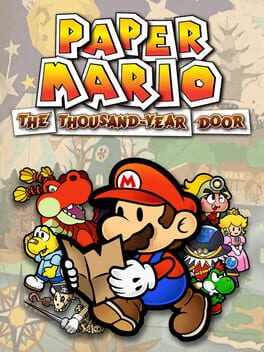It’s common for a turn-based RPG to be recommended with the qualification that it only gets good tens of hours in. One would think this wouldn’t apply to something as straightforward as a Mario RPG, but I bounced off The Thousand Year Door on my first playthrough for this reason exactly. The first two chapters are about as standard as an RPG can be, fighting a dragon in a castle and following it up with exploring a dungeon inside a big tree. You won't be blamed for thinking it's the world’s most generic RPG with Mario on top, but then the third chapter cranks the personality up to eleven. From that point forward, the charm is so strong that it actually got me interested in Mario games in general. It does so many fun things with the Mario universe that it reminded me why the series is so big in the first place. There’s a lot of fun to be had in a lighthearted game with a small but polished set of mechanics, and it’s a smart way to have mass appeal that’s also free from compromise. Some games drop the ball when trying to court audiences with tons of features, but Mario is appealing specifically because it lacks extraneous elements. The Thousand Year Door doesn’t even have a character attributes system, each party member just has a defense number, a health value, and a special move. That’s all it needed to make everyone feel unique, and no confusing elements were required. Anyone can understand this game and have a good time with it, at least as long as you don’t need a meaty challenge to hold your interest.
